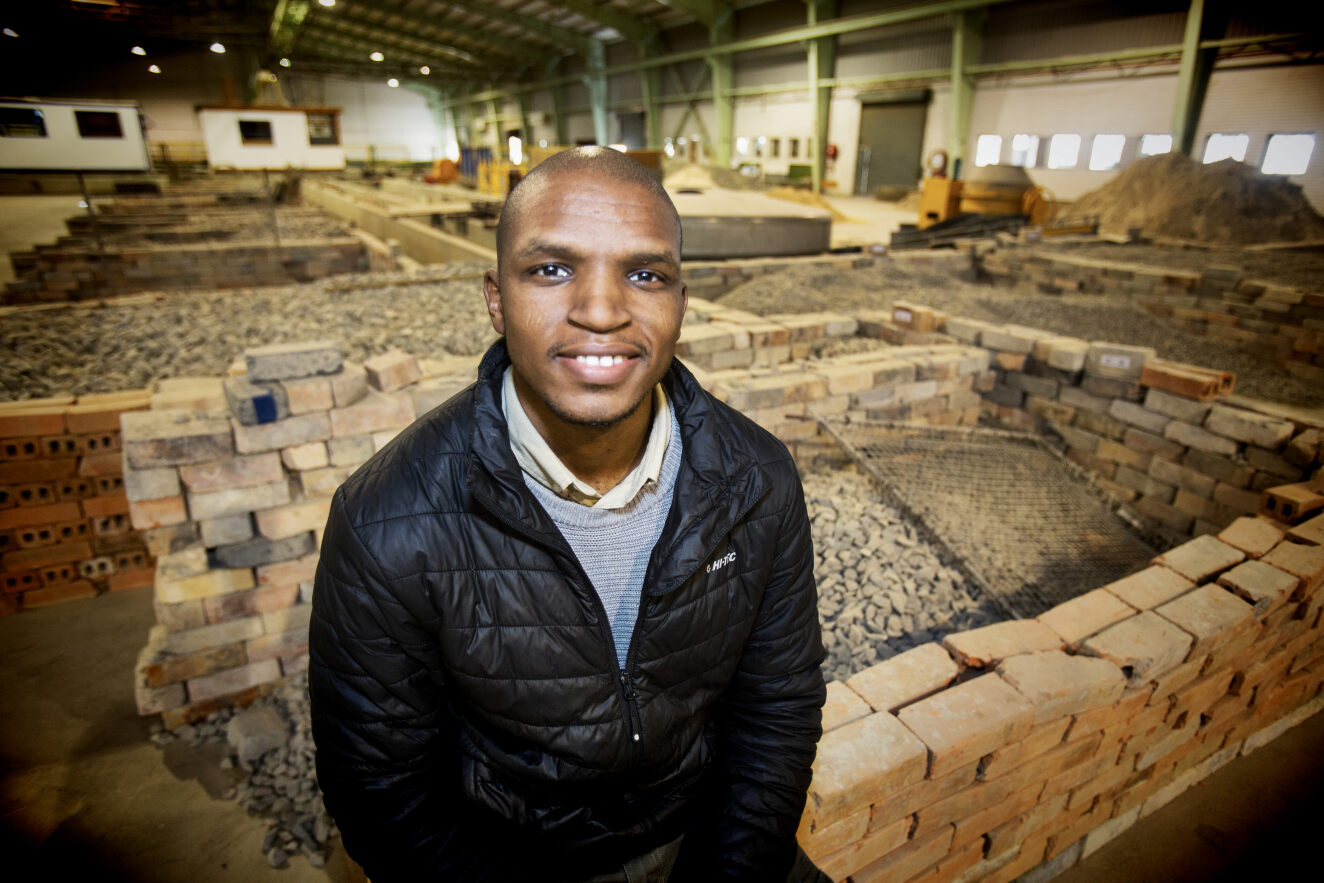Making technology and innovation important at the ports
Meet Vuyo Ndayi
Ndayi is a Capetonian who grew up near the ocean and Cape Town harbour. He combined his love for his environment and for all things engineering to first train as a marine instrumentation technologist, and to now work as a metocean and marine instrumentation engineer for the CSIR Coastal Engineering and Ports Infrastructure group in Stellenbosch.

Vuyo Ndayi is a Capetonian who grew up near the ocean and Cape Town harbour. He combined his love for his environment and for all things engineering to first train as a marine instrumentation technologist, and to now work as a metocean and marine instrumentation engineer for the CSIR Coastal Engineering and Ports Infrastructure group in Stellenbosch.
Ndayi works mostly in technology development and knowledge application rather than research, and the work he does is thus largely project orientated.
“Most of my work centres on port decision support systems, where we supply port authorities and operators with metocean (meteorological and oceanographic) environmental real-time and predicted data, which aids them in their port operations. The product I work on is called Integrated Port Operations decision Support System (IPOSS). The service is supplied mainly to the Transnet National Port Authority, which is the operator of the eight main commercial ports along the South African coast. My work entails system and metocean equipment deployment, maintenance and servicing, server maintenance and programming, as well as data extraction, analysis and reporting. There is also some research and development work for specific clients within this domain as well as project management,” he says.
Ndayi is part of a team that is investigating mitigation solutions to the adverse or extreme wind events affecting critical operations at the Port of Cape Town. “I am focusing specifically on the effects the extreme wind events have on container vessel tolandside operations, as well as container loading and unloading operations at the container terminal. In this task, I am looking at improvements that could be made to the short-term wind forecasting techniques, which could reduce downtime operational losses during high wind events.”
Ndayi enjoys the practical aspects of his work as it is very hands-on and requires spending significant time working in the field. “It is rewarding to see the impact of our work seaport shipping and terminal operations in real-time. There are also many opportunities to innovate and develop new approaches when a problem arises. I have a lot of autonomy to do my own thinking when developing new solutions,” Ndayi shares.
It is undeniable that ports are a prime element in the economy and Ndayi emphasises that about 90% of goods trade is handled through shipping, making it an essential component of the global trade infrastructure. Goods that arrive on cargo ships at the port are unloaded and distributed across the country via road or rail, forming part of a larger local distribution supply chain. This applies similarly to goods leaving the country at the port for export, and thus feeding in the global supply chain.
The CSIR takes the professional growth and advancement of its workforce very seriously. Ndayi mentions that since joining the organisation, he has had numerous learning opportunities. He has attended formal training courses to enhance his technical skills and seminars to expand his knowledge in coastal engineering and metocean applications of new technologies, all of which have been readily available. “I also manage some project activities as a project manager, which has allowed me to develop my soft skills in terms of client engagement and people management. Additionally, there are always opportunities to explore research and development ideas, which have enhanced my capacity as a researcher, even though it is not my natural strength.”
Due to the sparseness of our coastline and the distribution of trade resources in the country, South Africa’s seaports are distributed along its coast. Ndayi and his team members are required to work along South Africa’s extensive coastline.
“We are based at the CSIR in Stellenbosch, however, we service ports right along the coast, from Saldanha Bay on the west coast right up to Richards Bay in the east. We also have the occasional contract in foreign waters such as Namibia. The physical distance makes it difficult to attend to instrument and server issues when they arise from time to time,” he says.
“For example, we recently had a Waverider buoy that drifted from its anchor position just outside the East London harbour entrance. It drifted in a northerly direction towards Coffee Bay due to strong storm currents. If we were in the area, it would have been a simple issue to resolve – we would just track the buoy’s position and go out to retrieve it. However, it was not that simple, especially since the incident occurred on a Saturday night. On the upside, we have found ways to manage such issues, such as having multiple geo-fence warning systems, maintaining a very responsive and resourceful team and having a network of people we can rely on at the various port locations along the coastline to assist us when these incidents occur. We also have a lot of mitigations in place against these types of incidents, such as well-designed and reinforced mooring configurations. Fortunately, these occurrences are rare and manageable.”
When it comes to choosing a favourite port, Ndayi says, “I can’t say I have a favourite South African port. I find each port has its own interesting quirks and beauties to be appreciated. The people at the various ports are also diverse and interesting. It's always an eventful day working at one of South Africa’s ports.”
Ndayi studied electrical and electronics engineering at Stellenbosch University, which he completed in 2017. “Following this, I worked as a junior electrical control and instrumentation engineer in factory environment before joining the CSIR in 2020,” he says.


